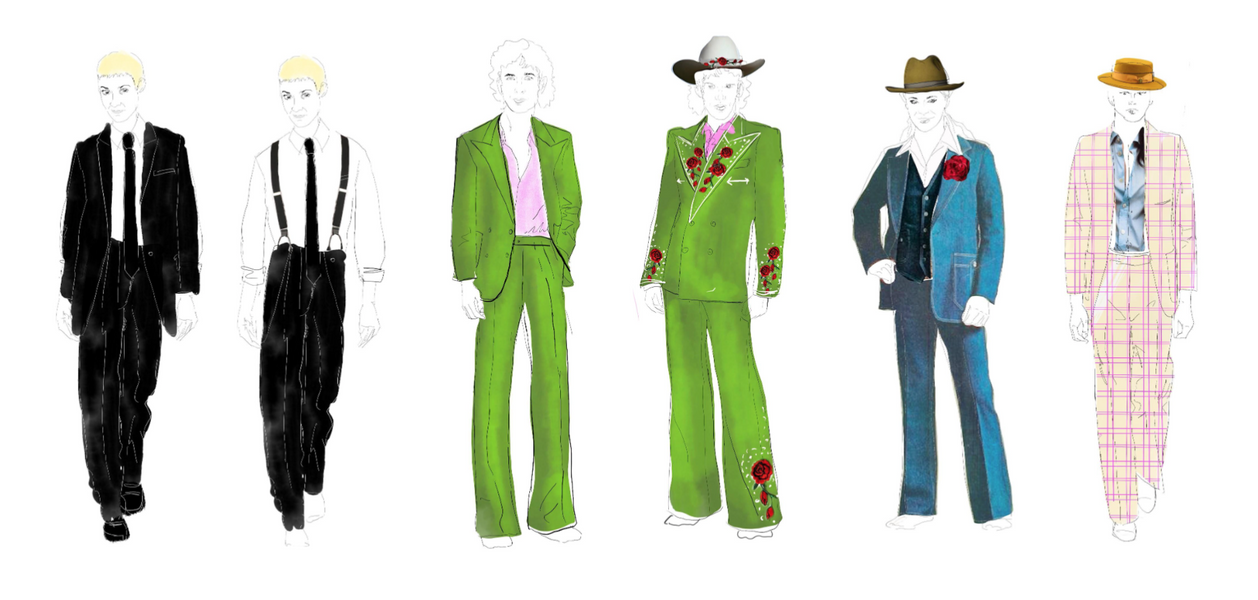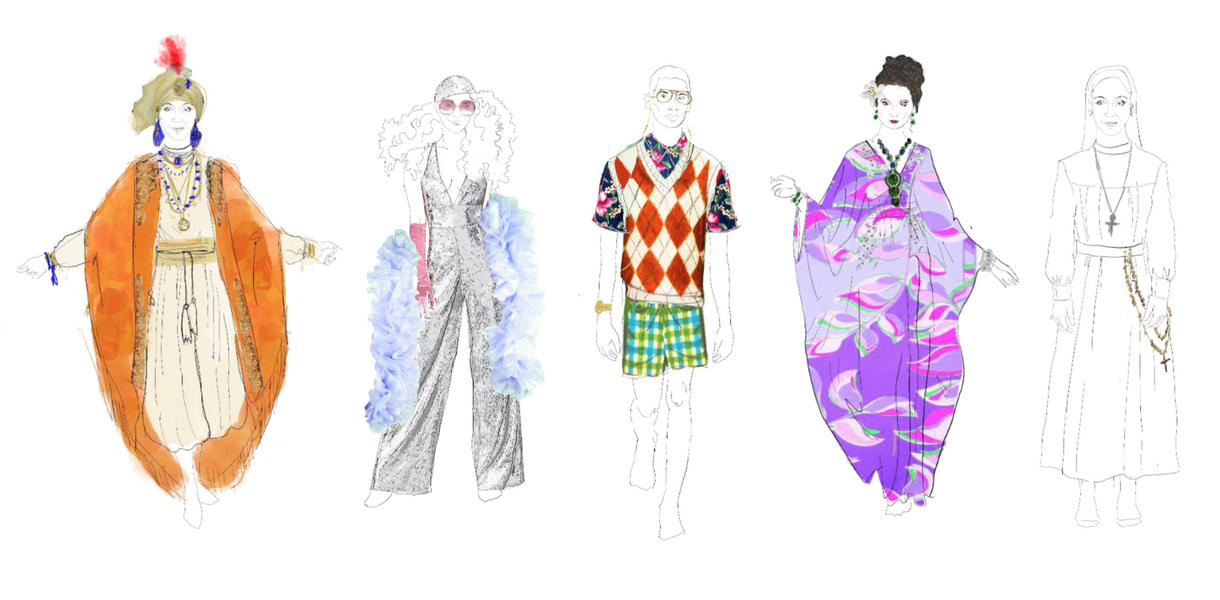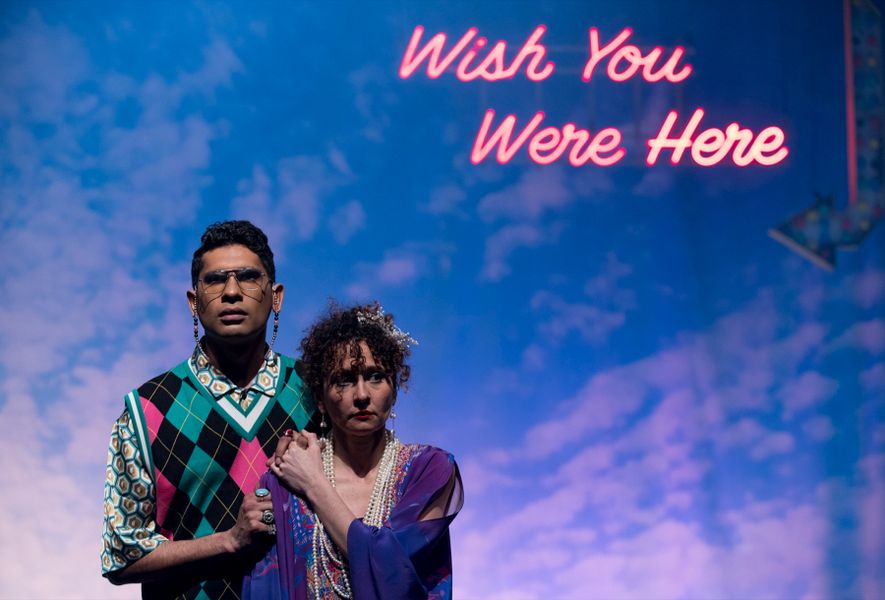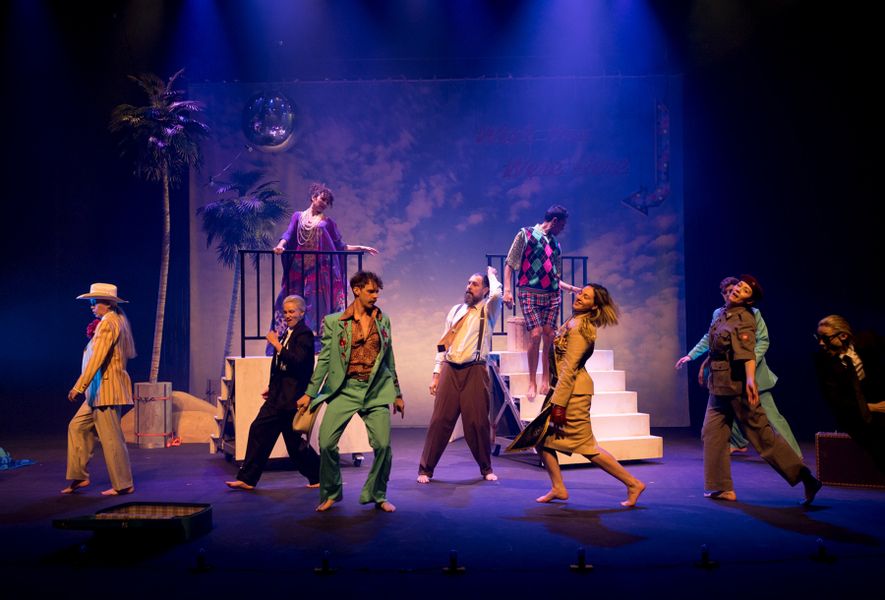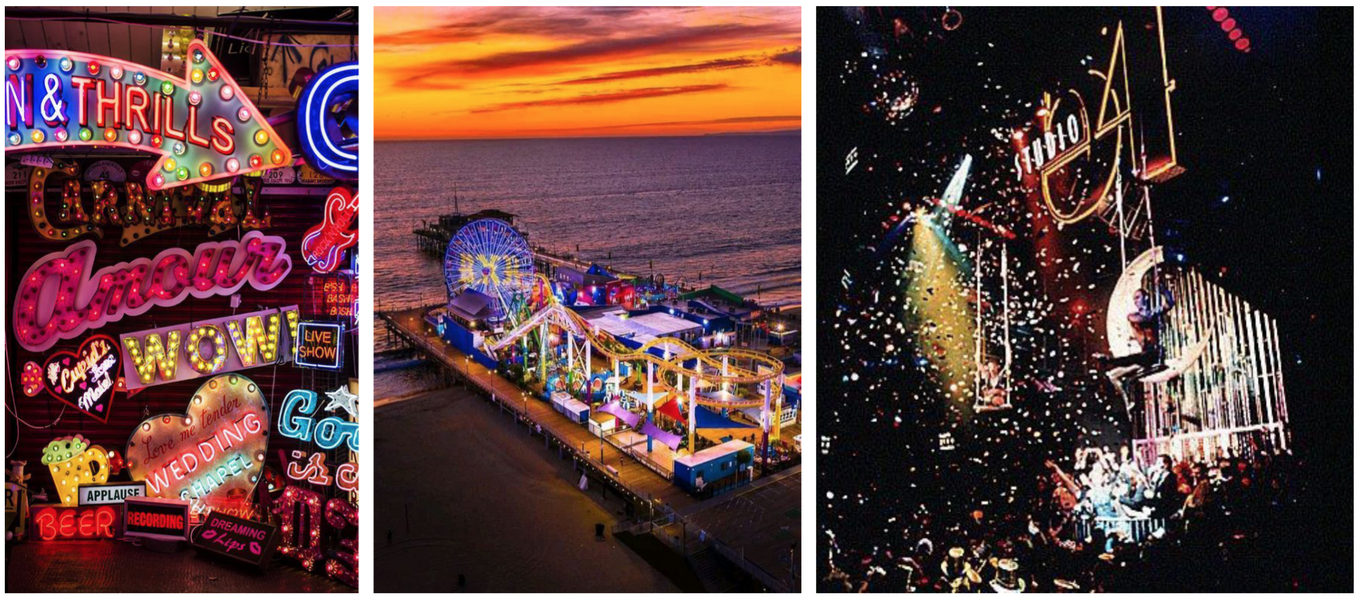
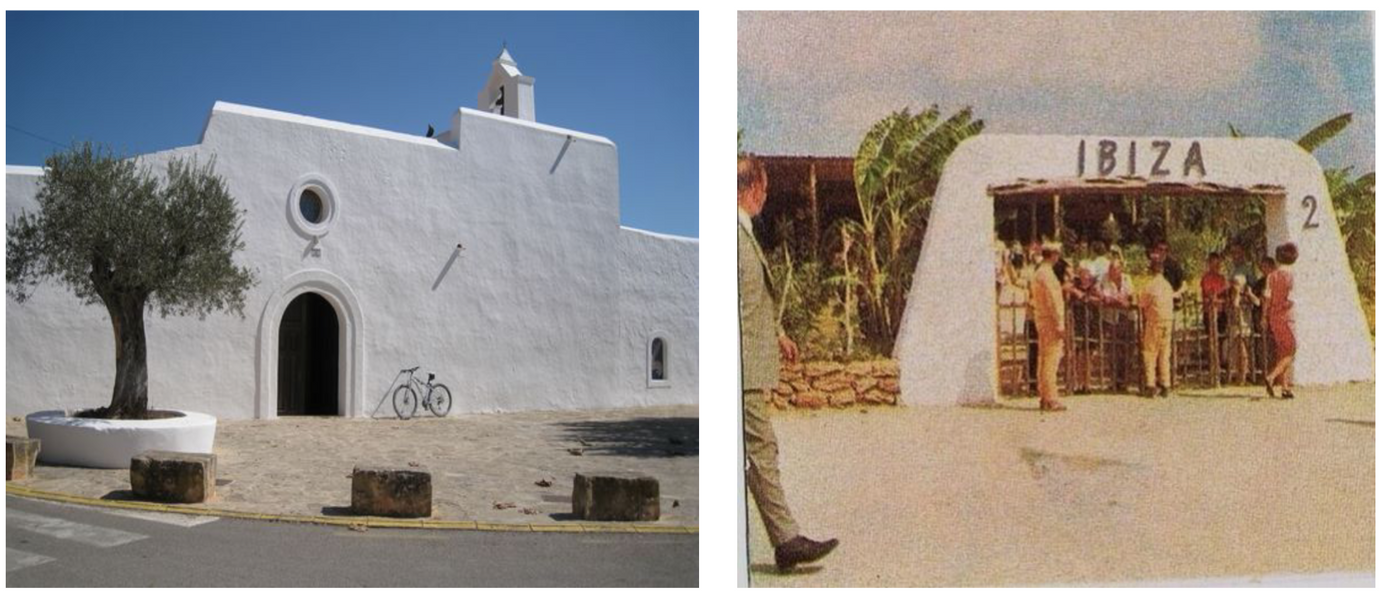
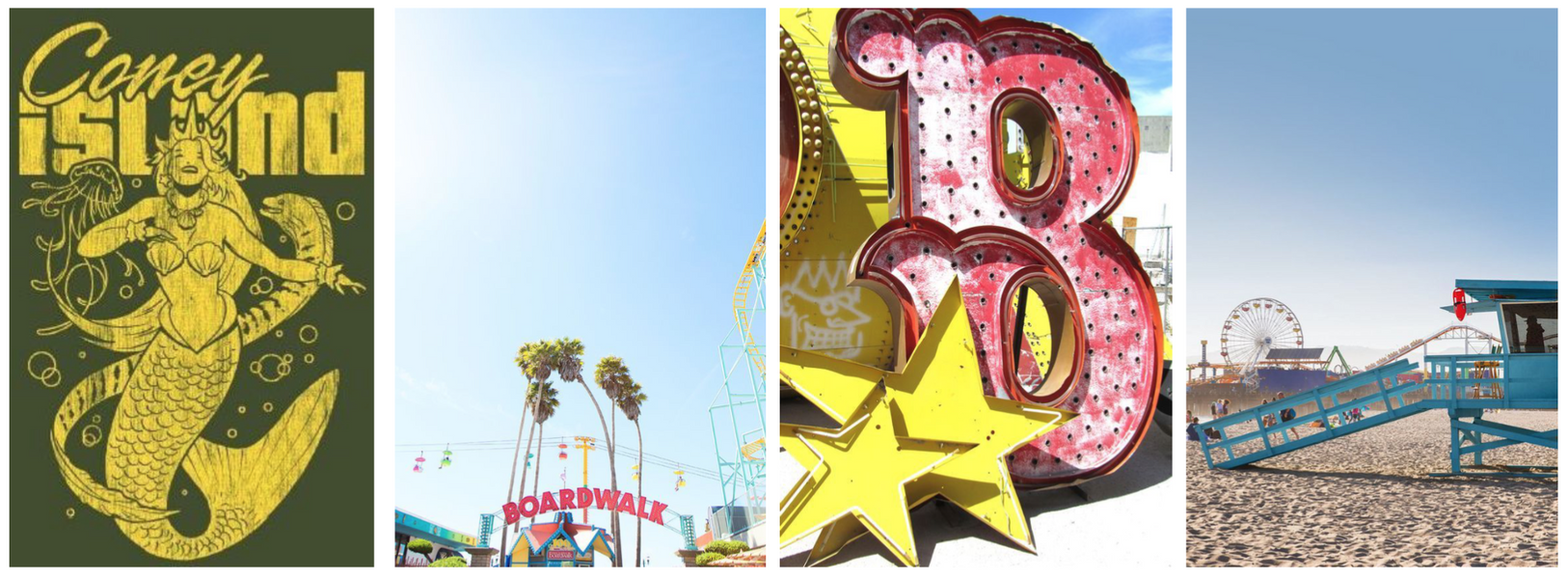
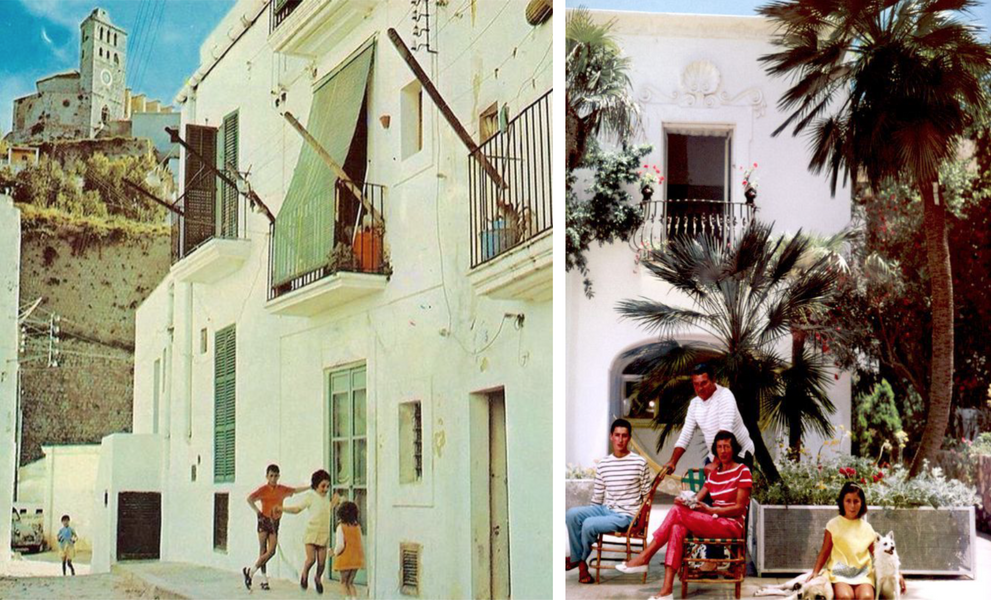
The Comedy of Errors
Bell Shakespeare’s 2022 production of The Comedy of Errors is directed by Janine Watson and designed by Hugh O’Connor (set and costume). Detailed information about The Comedy of Errors can be found here.
Director Janine Watson has set the 2022 production in the 1970’s, a deliberately analog world. The 1970’s was a time of conflict and war, a time when families were often fractured and family members separated. It was also a time of love, freedom of expression and fighting for love. These attributes drew Watson to make direct parallels to Shakespeare’s play and its setting. While the comedic aspects of the play often take centre stage, Shakespeare’s story starts with a civil war between Ephesus and Syracuse, with the character of Egeon threatened with death when he enters enemy territory. The threat to his life looms over the play, despite the comic hijinks that ensue.
The 1970’s setting is detailed in the colourful costume and set design, as well as sound design, with several pop hits interspersing Pru Montin’s score.
This is also a highly physical production. Watson worked closely with Movement Director Samantha Chester, who trained the cast each day of rehearsal. Physicality is used throughout, to support the storytelling. Egeon’s story, told via monologue to the Duke, is retold with the support of a physical sequence retelling the journey of his life to now, and the separation of his family many years ago.




Hugh O’Connor’s set design is evocative of 1970’s Ibiza, Coney Island-esque, a place where magic and trickery might happen. Ephesus is depicted as a bustling town of excess, glamour, hedonism and business dealings. It is also a town monitored by the Duke and the military, and their austere surveillance punctuates the frivolity of the town.
Kelsey Lee’s lighting design is vividly colourful, embracing 1970’s nostalgia. Rainbow-hued balloons fill the stage and are incorporated into the action. Neon signs illuminate messages such as ‘Wish You Were Here’, as if O'Connor’s set is a postcard from a loved one holidaying in an exotic location. The use of neon lights and messages plays a key role in signaling the journey of the characters through the play.
As The Comedy of Errors plays out over a 24-hour period (observing Aristotle’s Unities of Time, Place and Action), Lee and O’Connor’s designs reflect the passage of time in light and colour. We see the confusion and exhaustion of the characters as they travel from day into night into morning.
In one key set piece, a white arch is used as an entrance for three distinct places, with a neon sign at the top of the archway depicting which space a character is to enter. A cross represents the convent, legs in heels represents the courtesan’s lodgings, and an eye represents Dr Pinch the conjurer.
As the production will tour to venues nationally, O’Connor’s design needed to be efficient for touring – some venues will have one performance only, so a quick bump in and bump out is crucial.
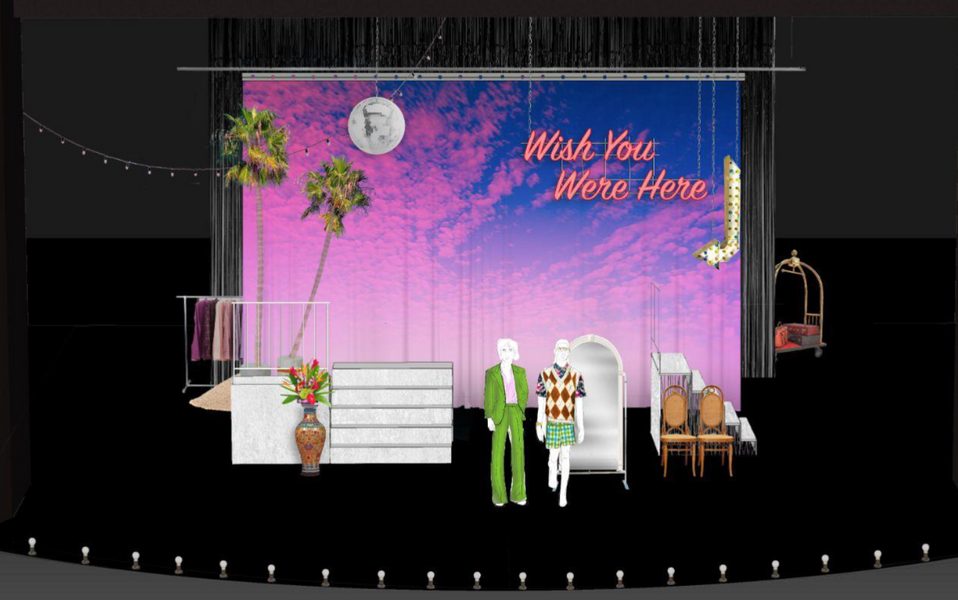
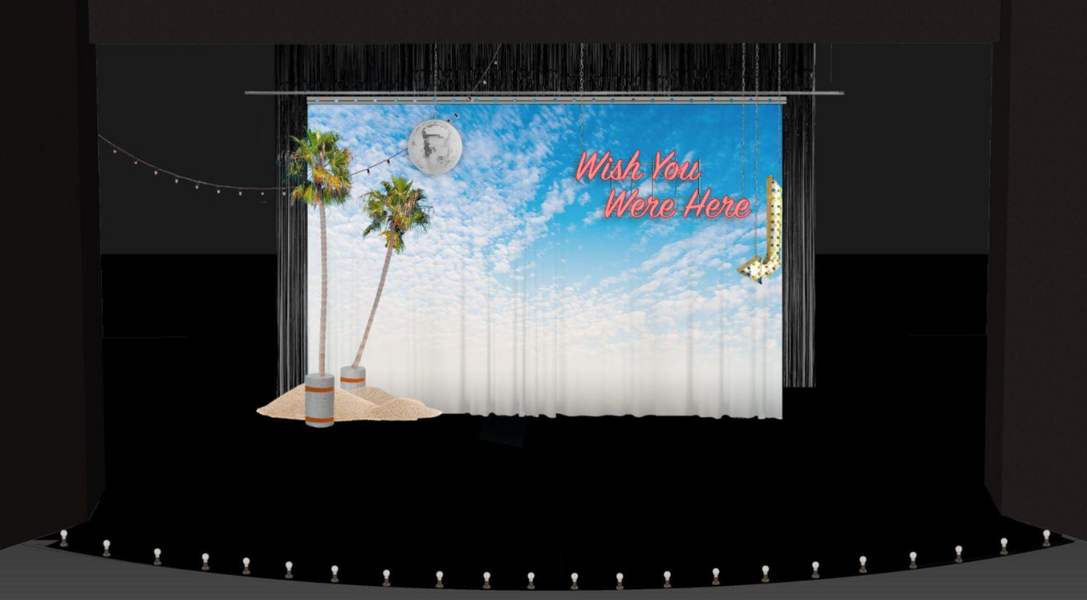

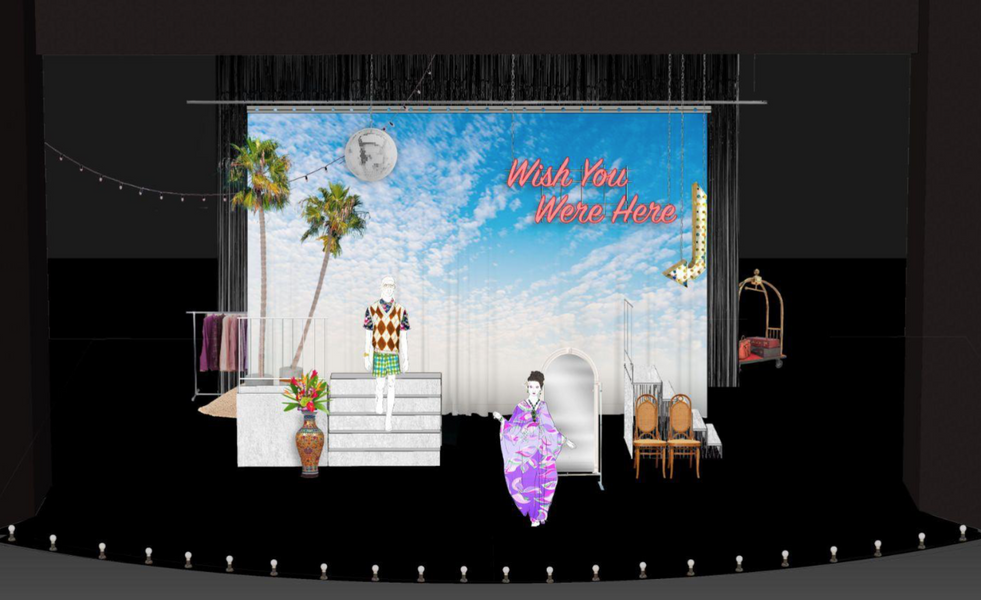
Hugh O’Connor’s costume design evokes 1970’s fashion and fun with a vivid colour palette and contrasting patterns.
Adriana oozes tropical glamour with a billowing kaftan-esque gown, making for scene entrances and exits with visual impact and comedy. There is an innate theatricality to her character and costume, accordingly.
Her husband, Antipholus of Ephesus, is similarly resplendent in a bright suit with embellishments and cowboy hat. He is a well-known businessman and somewhat of a showman, and also has a sense of pageantry about him.
Luciano, Adriana’s brother (traditionally played as her sister, Luciana), wears bold, contrasting prints to make a simple ensemble of shorts, shirt and vest stand out.
Antipholus of Syracuse’s costume echoes his twin brother’s costume but is far less ostentatious. The Courtesan is a vision of 1970’s disco glamour and sexual power in sequins and sunglasses. Dr Pinch is played as a mystic fortune teller.
There are however some exceptions to the vivid colour palette. Egeon has a muted palette and dilapadated suit, signifying a man who is ageing and weary, losing hope in finding his family, with a heaviness about him. We can see the impact of the years of travelling, as well as the loss of his family.
The Duke is played as a female leader, with a military-esque suit and gloves in cream and maroon.
Notably, the Dromios are costumed in stark black and white in contrast to all other characters. Played as non-binary characters, the Dromio costumes are androgynous, with white shirts and black pants with suspenders. The black and white palette signals their social status in their role as servants to the Antipholus characters, colours historically associated with such a role.
